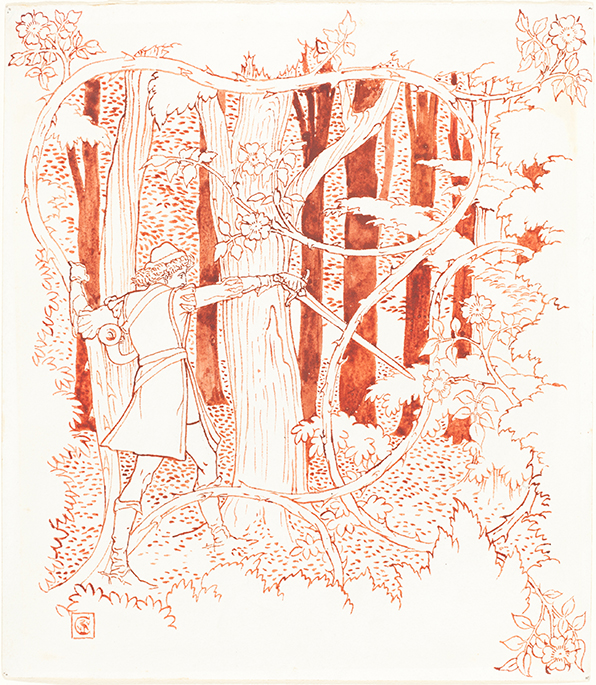
December 14, 2019–FEBRUARY 13, 2020
ROCOCO TO ROMANTICISM
Walter Crane (English, 1845–1915), Prince Charming in the Forest, undated. Pen and brush and red ink, 11 9/16 × 10 1/16 in. National Gallery of Art, Washington, DC, Julius S. Held Collection, 1985.1.29
Before about 1800, arabesque in European art typically served as a decorative addition to a central motif or larger design. Because of their ornamental utility, arabesque patterns were sometimes assembled into printed suites to serve as models for book illustrations, wallpaper, textiles, and other decorative arts. Such designs usually demonstrated a high degree of artifice, with their bilateral symmetry and contrived arrangements of vegetal forms and remained secondary elements to be absorbed within an overall decorative ensemble. That began to change with German Romantic artists such as Philipp Otto Runge, Peter von Cornelius, and Eugen Napoleon Neureuther. Inspired by developments in the literary realm, these artists staked out new territory for arabesque with experimental designs that crept well out of the traditional frame, sometimes occupying the entire composition.

Featuring an essay by Anne Leonard, Manton Curator of Prints, Drawings, and Photographs, Arabesquetraces the role of this curvilinear decorative motif through a variety of styles and media in European art. An elegant companion to the exhibition, this sixty-four-page softcover publication includes fifty-seven color illustrations highlighting objects from the show and their influences.

